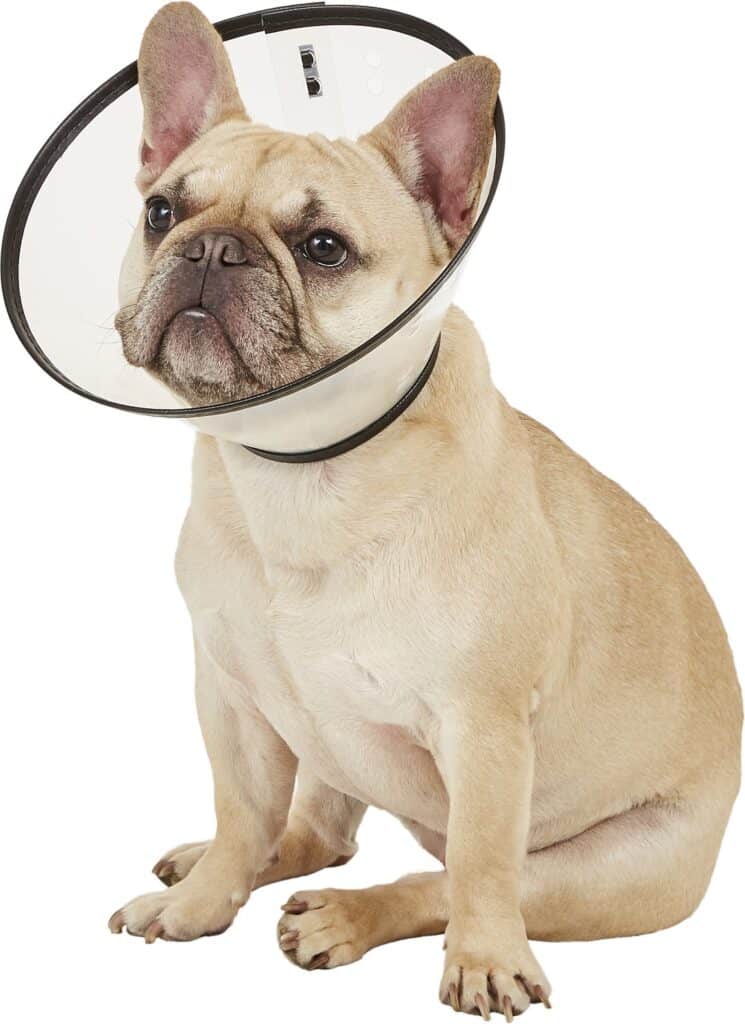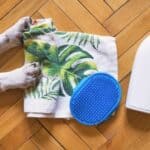
Most experts recommend putting a muzzle on your dog to prevent it from licking the wound or biting you during treatment.
As is often the case with young children, it is common for pets to injure themselves quite frequently. Obviously, this is also and above all about dogs. Most of these injuries are superficial and do not require special attention. But when it comes to deep, painful cuts, it’s important to know how to disinfect your dog’s wounds around the house.
Disinfect your dog’s wounds
The infections are one of the most common diseases in domestic animals. Not taking care of them with due attention can lead to very serious complications for the health of your four-legged friend. A superficially treated wound can even result in death.
But we don’t want to alarm you. The secret to getting your dog’s wounds to heal and disinfect is to stay calm, assess the situation and be aware of being able, or not, to be able to intervene effectively. Once the severity of the wound is verified, a series of steps must be followed to treat it and allow the animal to heal .
To do this, you will need to have a series of products that can be easily purchased at the pharmacy. Fortunately, no special medicines are needed for this type of problem in pets.
How to evaluate a wound
When your pet runs, moves or plays, you may see him complaining about a possible injury. They may limp, feel pain when touching a certain area, or even lose blood. If the moans are very frequent, you will need to approach the animal and check every corner of its body , looking for possible injuries, thorns or anything else that could cause such discomfort.
Once you find the wound, you should avoid touching it with your bare hands or washing it only with water , because you can trigger an infection and make the situation worse.
Most experts recommend putting a muzzle on your dog to prevent it from licking the wound or biting you during treatment . In this way it will not complicate the treatment and you can concentrate better on what to do. Similarly, we recommend that you clip the area around the wound with small scissors.
If you see tendons, bones, or constant bleeding , this means that the wound cannot be treated properly at home. So you have to take the dog to the vet without wasting time . We recommend that you apply pressure to the wound during the transfer to calm the bleeding.
Conversely, if the wound already has no bleeding and only bare skin is visible, you will certainly be able to treat it effectively . But first you need to know how to disinfect it.
Process for disinfecting your dog’s wounds
First, you need to clean the affected area of dirt and other elements that may be present. To do this, an antiseptic with iodine or soapy water should always be used. This process can be done by pouring the liquid directly or by applying it with an antiseptic gauze.
Warm water will help keep your dog calm. The quieter the animal, the easier it will be to continue the treatment. This wash must be done for at least two minutes.
We recommend the use of gauze, as they do not leave fibers inside the wound, unlike cotton. Once this is done, it is time to apply saline (a solution of sodium chloride in purified water) which will help you complete the wound cleansing .
The affected area may become inflamed over time, so you can apply an ice pack to ease the pain. An element to always keep in mind is that, whatever product you decide to use to treat your dog’s wounds and injuries , it must be suitable for use on animals .
Disinfecting Dog Wounds: Conclusions
Once you have disinfected the wound, it is time to let it rest, trying to prevent your pet from opening it again . The animal will tend to lick or scratch itself. Most of the time, it is enough to leave the affected area out in the open air for it to heal faster.
However, if your pet cannot calm down, it is best to bandage the wound. This is the best way to avoid having to start over . In addition to this, you will have to put an Elizabethan collar on the dog, again to prevent it from licking itself or tearing the bandage with its teeth.
We recommend that you check the bandaged wound frequently to make sure it is healing properly. If the area does not deflate or you notice pus or some other foreign element, take your pet to the vet immediately .
On the contrary, if the condition of the wound improves visibly and no mishap occurs, you can remove the protective collar and resume everyday life. Your four-legged friend will recover his shape quickly and you can start playing together again.






